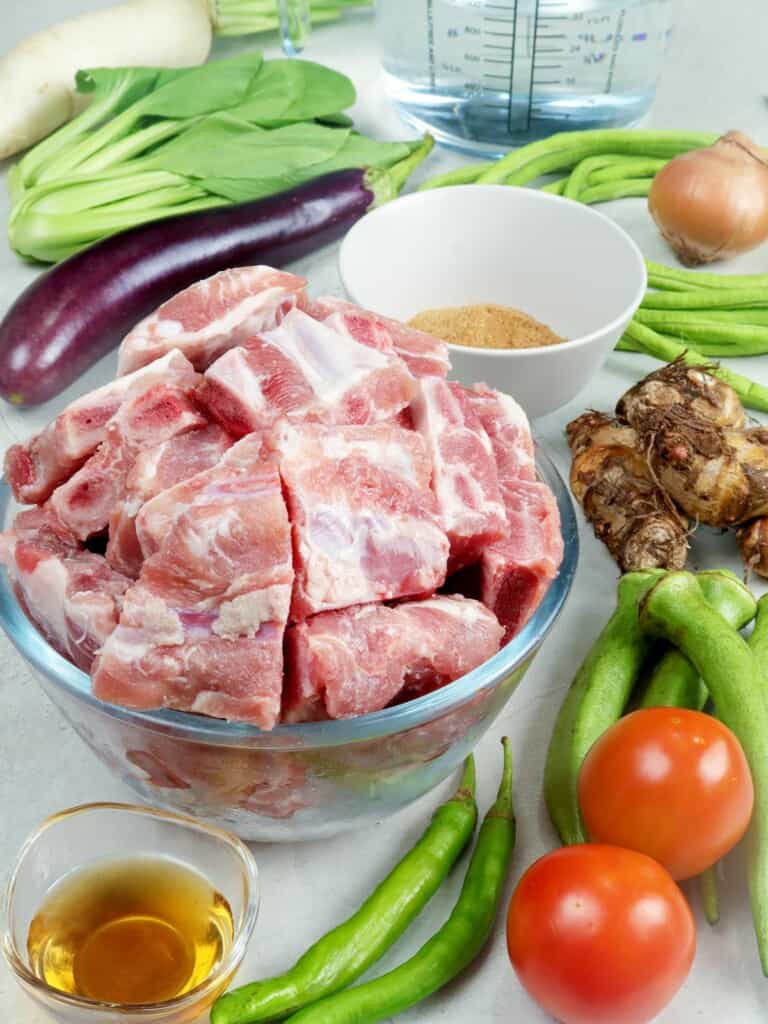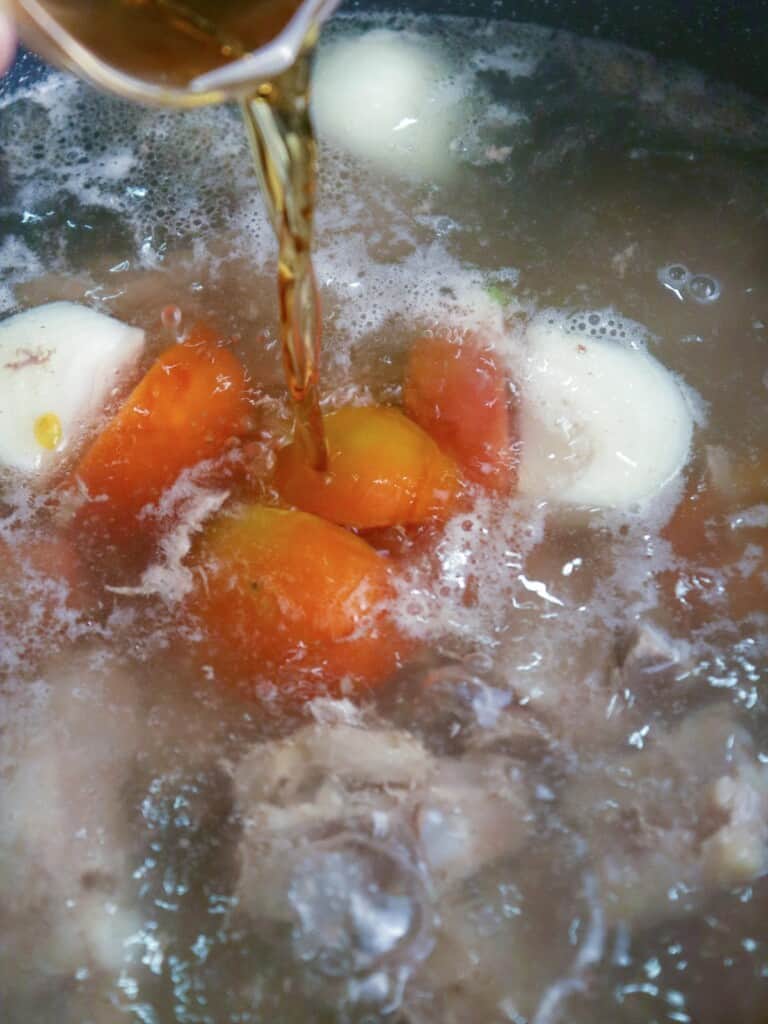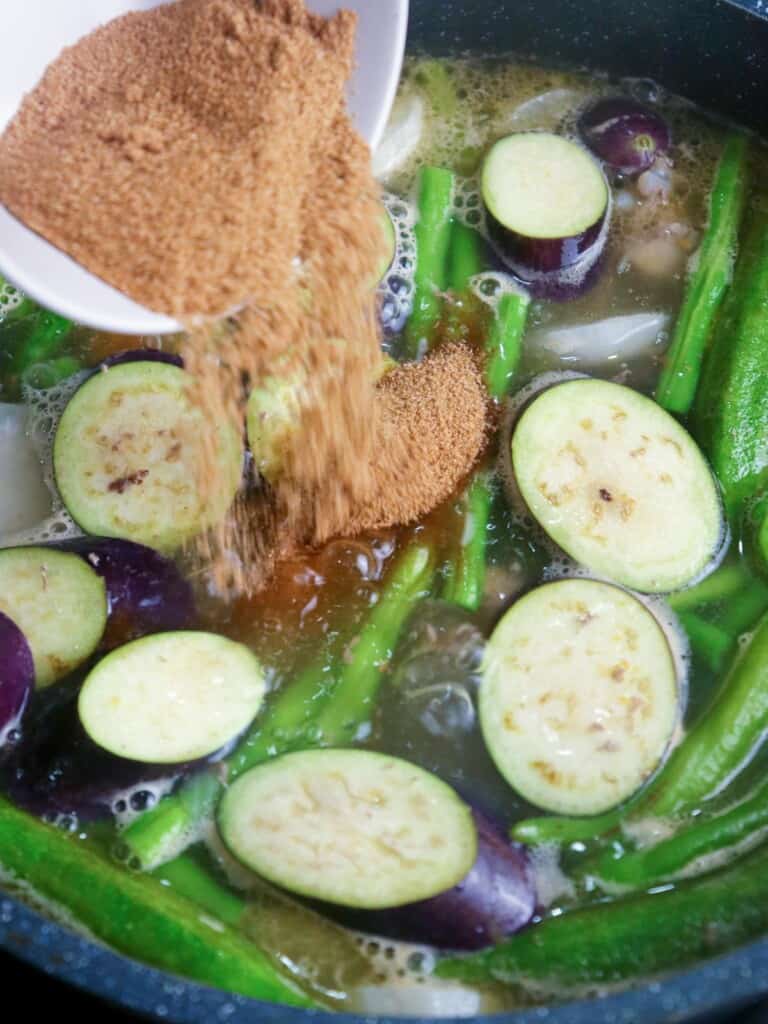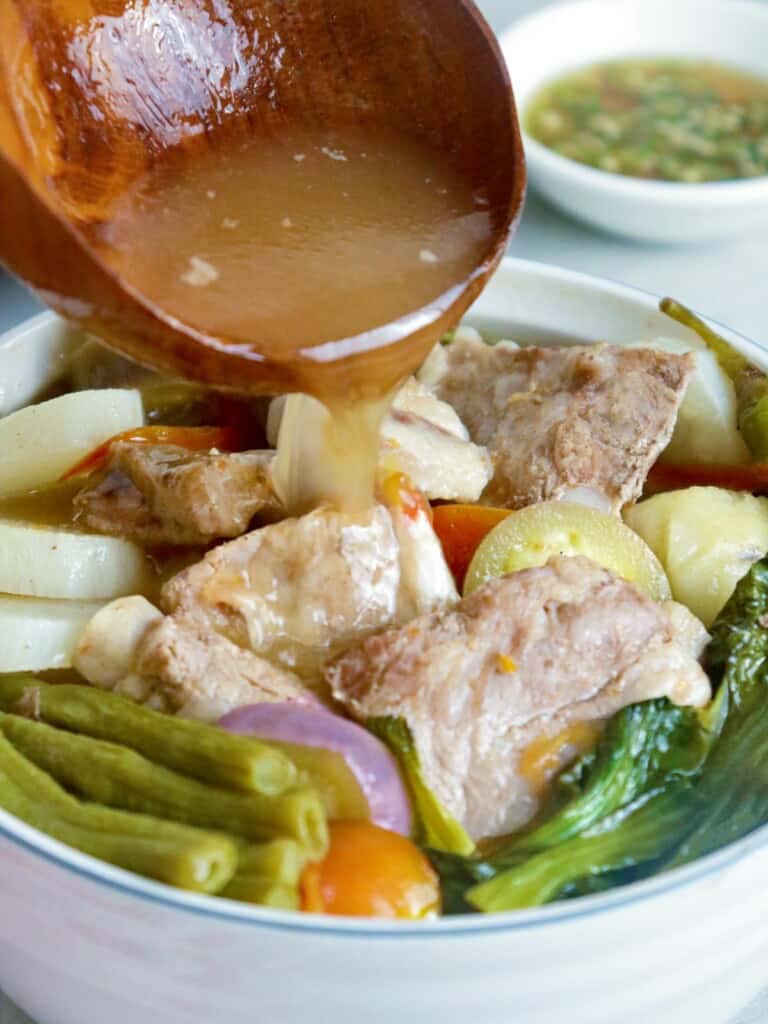Sinigang na Baboy is the ultimate comfort food! Made with pork ribs, vegetables, and tamarind-flavored broth, it’s hearty and delicious on its own or served with steamed rice.

Today has been a cold and wet day, with rain intermittent throughout. It was the kind of weather that calls for a piping-hot pot sinigang na baboy, which was what I made for lunch.
Chockful of crisp-tender vegetables and meaty ribs thick with tamarind’s sourness, my steaming bowl of soup provided much-needed comfort against the harsh weather outside. It was delicious, filling, and the perfect way to warm up!

What is Sinigang
Sinigang is a classic Filipino soup characterized by its sour and savory medley of flavors. It’s popular comfort food in the Philippines, usually served on its own or paired with steamed rice on rainy days to ward off the cold.
Like adobo, the term sinigang describes a cooking method more than a particular dish, as it has many variations. It can be made with protein such as pork, fish, shrimp, beef, and chicken and souring agents such as tamarind, guava, green mango, calamansi, kamias, batuan, santol, and other native fruits.

Ingredients
- Pork-while you can use meatier and leaner parts such as pork shoulder (kasim), I recommend bony cuts such as spare ribs, pork belly with ribs, hocks, knuckles, and tailbone or neck bones for better flavor.
- Tomatoes– use ripe, juicy tomatoes
- Onion-peeled and quartered
- Fish sauce– brings umami flavor; you can swap it with salt if you prefer
- Gabi– adds a starchy component to the dish and thickens the broth
- Radish (labanos)
- Vegetables- the recipe uses sitaw (long beans), eggplant, okra, and bok choy, but feel free to include other local produce available such as kangkong (water spinach) and pechay
- Tamarind– can be fresh pods, paste, or powder mixes
- Banana or finger chili peppers (siling haba)-adds a mild heat; optional and can be omitted

How to make from scratch
I usually use packaged tamarind mixes as the fresh fruit is not always available in my area. Although these powder flavorings are easy and convenient to use, nothing beats pork sinigang from scratch! Just follow the steps below on how to use green tamarind pods.
- Wash tamarind pods under cold, running water to remove any grit or dirt from the skins.
- Place in a saucepan with about 1 cup water and bring to a boil. Cook for about 4 to 5 minutes until soft, and the outer skins begin to burst.
- Using a fork, mash the tamarinds to release the pulp.
- Place the tamarind and liquid in a fine-mesh strainer set over a bowl. Continue to mash with a fork, returning some of the liquid into the strainer once or twice to fully extract the juice.
- Discard seeds and skins. Pour tamarind juice into the pot.

Cooking Tips
For a clearer broth, you can parboil the meat. Bring to a boil, drain, and discard liquid. Rinse the meat and pot well and continue cooking with fresh cold water. Tend to the soup regularly by removing scum that accumulates on top.

How to serve and store
- Pork sinigang is delicious on its own or with steamed rice. For the complete experience, serve it with fish sauce and chili peppers on the side for dipping.
- Store leftovers in a container with a tight-fitting lid and refrigerate for up to 3 days.
- Reheat in a saucepot to an internal temperature of 165 F or in the microwave at 2 to 3-minute intervals until completely warmed through, stirring well after each interval to distribute heat.